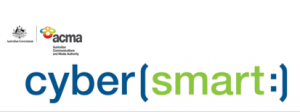These are great articles designed to put in school newsletters to keep parents informed around the latest cybersafety issues. They are available via http://www.cybersmart.gov.au/Outreach/Connected.aspx
2 – Supporting your child’s safe online social networking
Social networking is an extension of offline friendships and we should treat people the same way as we do in real life. Chatting to friends using IM, chat or social networking is a great way to stay in touch and make new friends. However, your child should always keep in mind that there are some risks meeting people online—especially if they don’t know them in real life.
Discuss the following aspects with your child to help them safely enjoy social networking.
- Limit your friend list. Do you know your online friends in the real world? If not, consider changing your settings to limit interaction with them or remove them.
- Protect personal information. Restrict information that people can use to access your finances, and to identify where you live, work or go out.
- Check on your images. Does everything about your life really need to be online?
How might this affect you and your reputation in the future? - Stay respectful. Are your posts respectful to friends and others?
This is real life; being online is no excuse for bad behaviour. - Think twice before meeting offline. If you want to meet someone offline be safe – take an adult with you, meet in the daytime and in a public place. Don’t share information too early.
It is important to note that there may be age restrictions that apply to your child joining a social network. Many popular social networks are restricted to users only above 13 years of age.
If your child or someone they know wants to talk about online friendships, visit the Cybersmart Online Helpline (www.cybersmart.gov.au/report.aspx) or call Kids Helpline on 1800 55 1800.
Department of Education and Early Childhood Development resources http://www.education.vic.gov.au/about/programs/bullystoppers/Pages/studentmodule.aspx